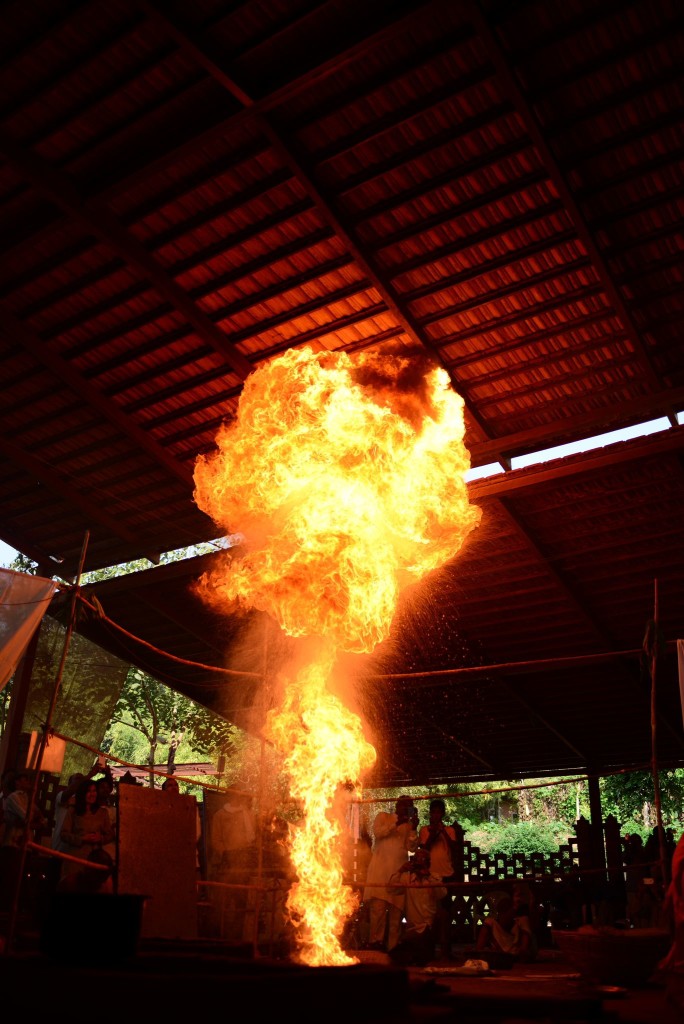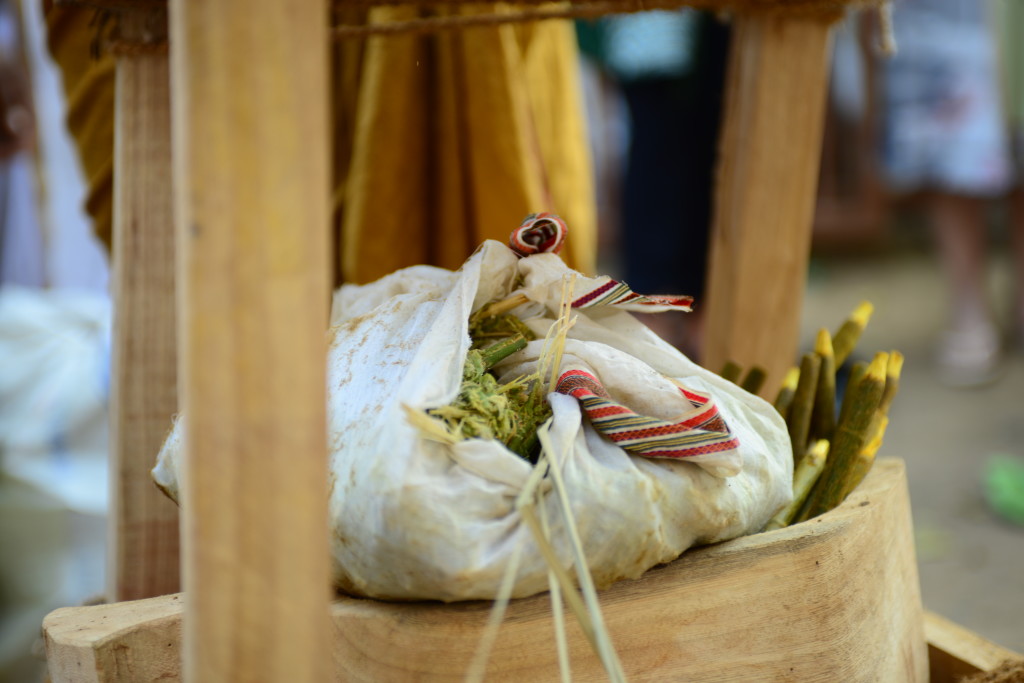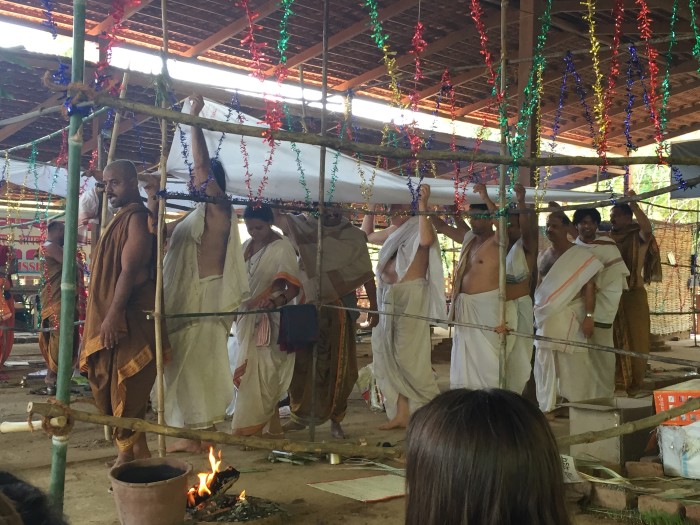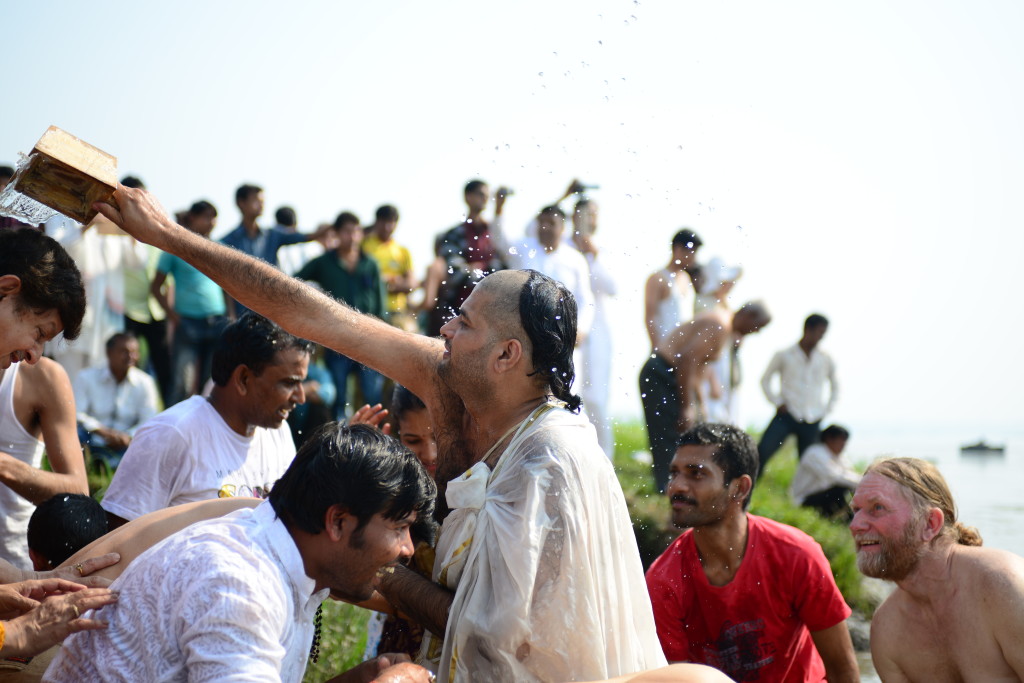Somayag is a complex ritual, involving a team of 16 Rutviks (priests). Each has his own responsibilities and will chant from one of the four Vedas. Together, all four Vedas will be represented. A number of different processes and tasks are often going on simultaneously. Following is a brief description together with the approximate timings. (Timings are given in IST – Indian Standard Time – which is 5.5 hours ahead of GMT).
6th February
4pm to 6pm
Fire is first generated in the Tretagni Agnihotra altars (3 altars of the Yajaman). Fire is generated by traditional friction method using two-man block and spindle technique. It is known as Agni Mantan.
7th February
9.30am to 1.00pm
Opening ceremony.
Energetic clearing of the Somayag shala.
Team of priests is gathered.
Fire is transferred from Tretagni altars to the Somayag altars.
5.00pm to 7.30pm
Consecration (Diksha).
8th February7.00am to 1.00pmSomavalli herb is ‘purchased.’ 4.30pm to 7.30pmPravargya. |
 Pravargya |
9th February
9.00am to 12.00pm
Pravargya
Quiet Mantras.
Soma is freshened.
4.30pm to 7.30pm
Pravargya.
Soma is freshened.

Somavalli
10th February
7.00am to 1.30pm
Pravargyas continue.
5.00pm to 9.00pm
Procession to Mahavedi.
Pravargyas continue.

11th February
6.00am to 1.00pm
Offering of Soma into the Uttarvedi.
Everyone has the opportunity to help crush the juice from the Soma.
5.00pm to 1.00am
Offering of Soma into the Uttarvedi.
12th February
4.00am to 7.00am
Rutviks chant, without break, 1,000 Mantras.
9.30am to 12.30pm
Rutviks make offerings to atone for any mistakes they may have made in carrying out their duties in the Somayag.
Final offerings are made.
1.00pm to 2.30pm
Procession down to the river.
Various implements used in the Somayag are thrown into the river.
Everyone takes bath in river.

Yajaman douses participants with water from the Narmada.

